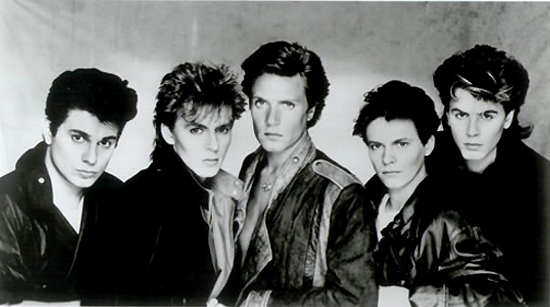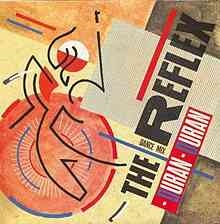Something of a gear shift at the time for Duran Duran, a band who had unrivaled success in the early 1980s, ‘The Reflex’ heralded a new chapter for the group, who had previously delighted in surfing the new romantic wave with artful aplomb, skittering rhythmic loops, soaring melodies, sweeping synths and a steely ambition that saw their self titled debut and Rio cut a swathe across pop culture, enjoying the kind of adulation usually reserved for a boy band. After struggling to make a single version of the opening track from their Seven and the Ragged Tiger album work they turned to super producer Nile Rodgers whose remix of cut up rhythms and clever stuttering sample stings alongside a more funky arrangement transformed ‘The Reflex’. Every part is splattered onto a canvass of cut-ups then reassembled into what, in 1984, was a futuristic single, taking its cues from hip-hop and nightclubs, and it would lead the way for other acts, a popping white funk template of grooving basslines, steel drums which is actually a sound keyboardist Nick Rhodes came up with on his Roland Jupiter-8 keyboard: “…Whenever I hear that steel-drum part it always brings a smile to my face because it’s so out of tune. Steel drums always are, but it was exactly right in terms of rhythm and tone. So a wood-block sound was mixed in to make it even more percussive and, successfully, it did the job,” says producer Ian Little.
Laced with Le Bon’s lip curling vocal delivery embodying the abstract narrator, suggesting obsession and dangerous liaisons (‘I’m dancing on the Valentine’), the busy samples are a collision of earworm-like backing refrains that echo pop history, from the intro’s classic sideways “Na-na-na-na” chants to the pre-chorus’s raggedly sliced ‘Wheye-eye-eye-eye-eye” that tumbles forth into the main hook. ‘The Reflex’ is a memorable and influential postmodern song that’s artfully and playfully built for stadiums and to soundtrack the Durans global dominance. The newly remixed version hit in the top spot in 1984 and would be Duran Duran’s last UK no 1. Later Rodgers would produce ‘The Wild Boys’ single as well as the album Notorious (1986) and several tracks on Astronaut (2004).
One of the most successful pop groups of the 1980s and racking up hundreds of millions of albums sales, running through numerous line-up changes since then, Duran Duran have recently worked with Mark Ronson and returned in 2015 with the album Paper Gods. Still, Duran Duran are both derided and praised in equal measure, there’s often a focus on a couple of their videos’ some claiming the setting for the likes of ‘Rio’ were a reflection of opulence but that is a sweeping generalisation, in fact, in these videos they were embodying a sense of escape and transporting listeners and viewers to different lands. Here they are rejecting the norms of rock riffing that permeated the mid-1980s stadiums; press play on ‘The Reflex’ and it won’t fail to get you moving and singing along, that’s what makes it the capturing of a zeitgeist.




